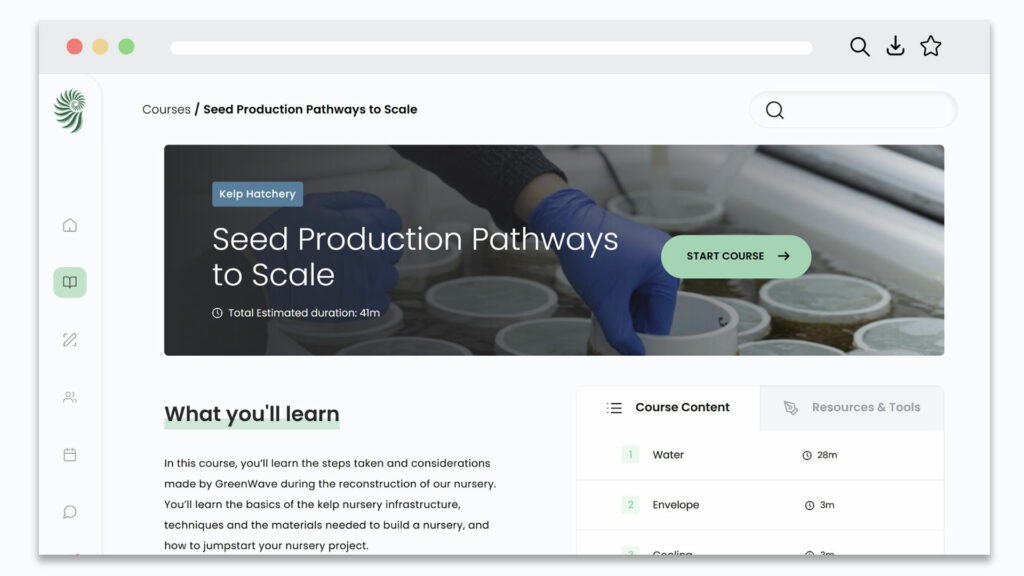pasteurization
Pasteurization only kills harmful microorganisms and typically only includes heat.
Back to: Building a Gametophyte Seed Bank
Water should be passed through a sand filter before being sent through the bag and cartridge filter system. When transferring your water from your transport vehicle to your holding tank, send the water through a 25-micron bag filter and a 5-micron cartridge filter. This step will filter out any larger particles and speed up the ozone and protein skimming process.
The water is then held in a tank for protein skimming and ozone treatment. The size of the protein skimmer and ozone generator depend on the amount of water you are processing. Use an ozone controller that monitors oxidation reduction potential (ORP) to keep track of the progress. Refer to the Seed Production Pathways to Scale course on the Ocean Farming Hub to learn more about how GreenWave cleans and sterilizes water. Within that course, you will also find a build list which contains links to the necessary equipment.

Treating the water with ozone will neutralize microorganisms that are still in the water. The protein skimmer will then remove waste and dissolved organic nutrients from the water, as well as help to balance the pH. Once the ORP is higher than 650, the water can be transferred to the next stage. From here, the water will be pumped through a series of three cartridge filters going down to 0.2 microns. In a three-filter system, you may choose to have a 5-micron bag filter, followed by a 1-micron, 0.35-micron, and 0.2-micron cartridge filter. The 0.2-micron filters are significantly more expensive than the others, so you should use the smallest filter size you can in line before them. Any leftover contaminants will be filtered out at this point and your water is ready for use for rearing seed spools. We recommend a pasteurization step for water that will be used for gametophyte culturing.
The pasteurization step can be done in any vessel that can create and hold near boiling temperatures. At GreenWave, we use a coffee urn and some 4L polypropylene bottles. The bottles you use should be made with plastic that can withstand high temperatures and pressure without leaching into the water or melting. For our 4L bottles, we put them in the coffee urn for two 45-minute baths, letting them cool to room temperature between each bath. After they’ve been sterilized and have cooled to room temperature, we move them into the cold room to chill. The size of your bottles will determine the time you sterilize your water. You should pasteurize for 10 minutes per liter of vessel size, plus 5 minutes added to that total.
Pasteurization only kills harmful microorganisms and typically only includes heat.
The process of a soluble chemical dissolving out of a product.
Click on each step below to see a summary of cleaning and sterilizing water.